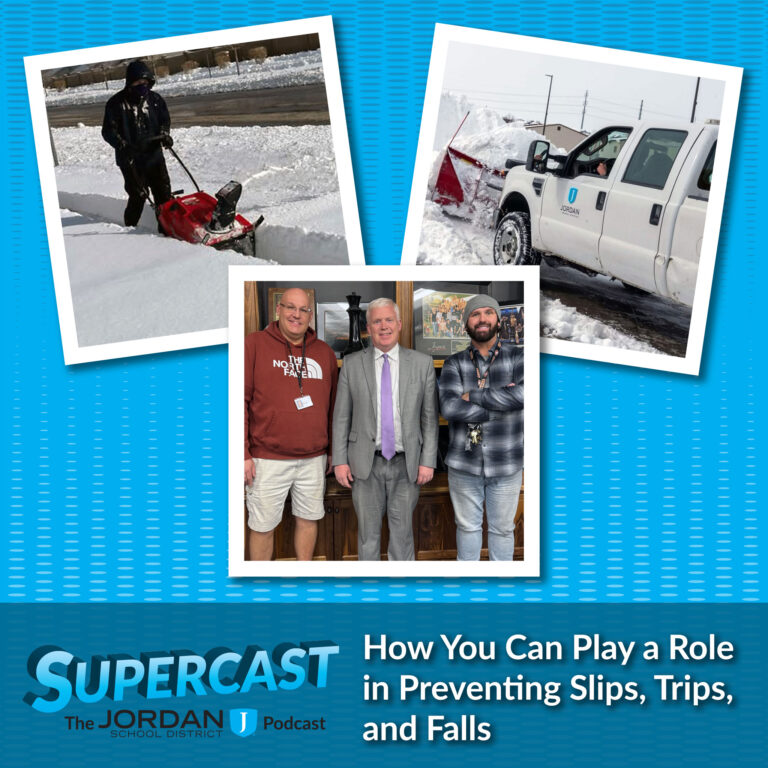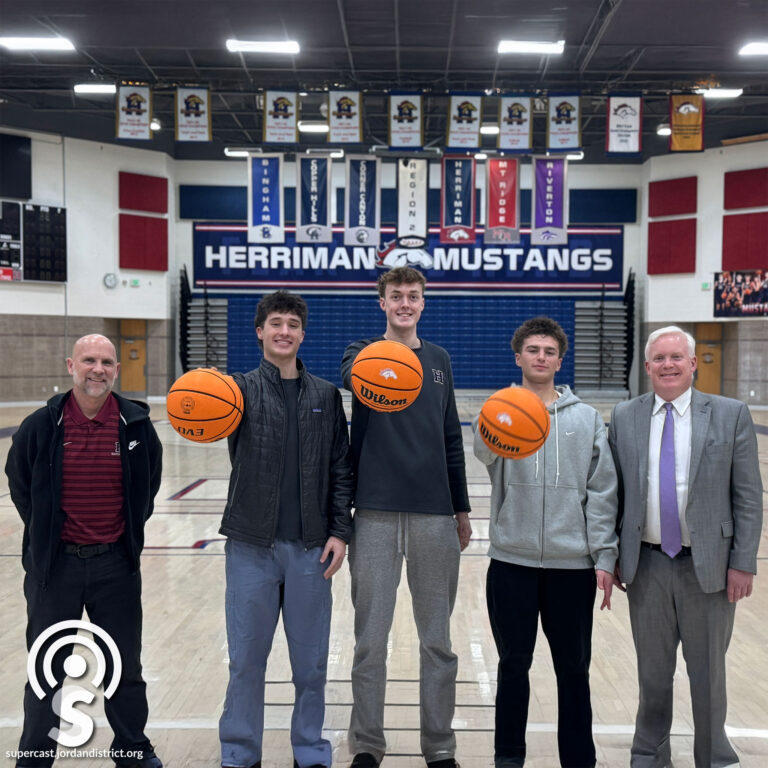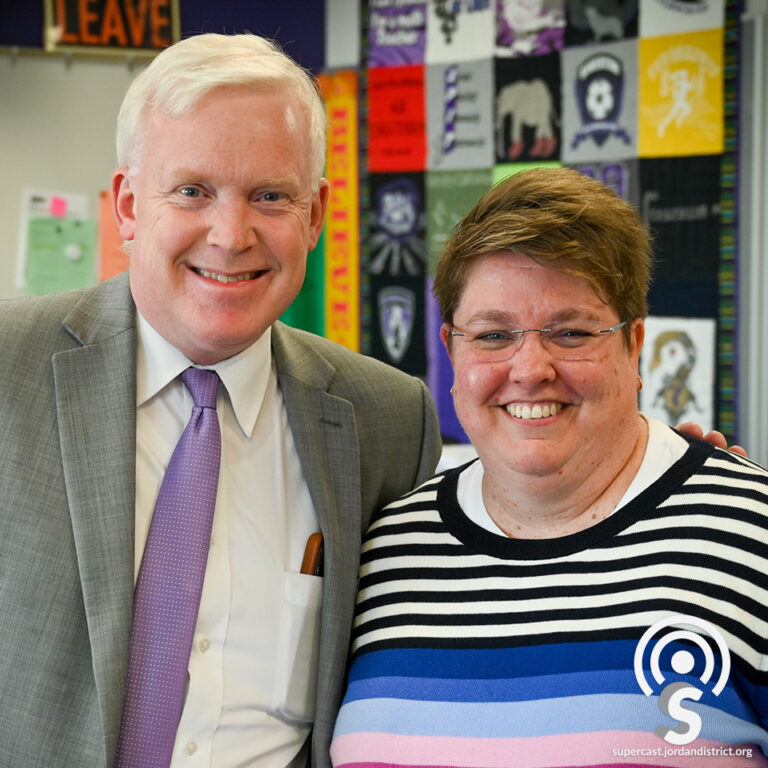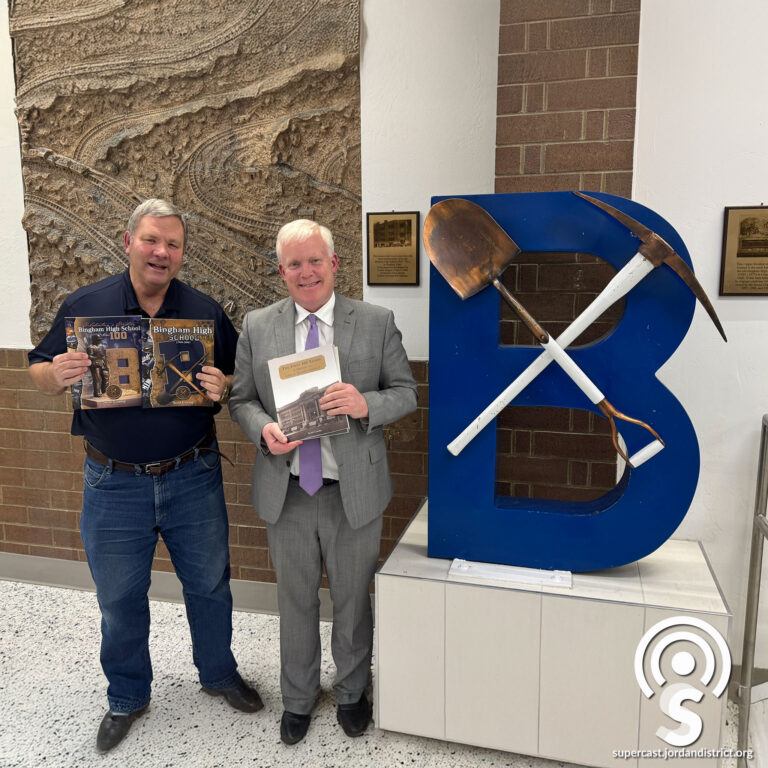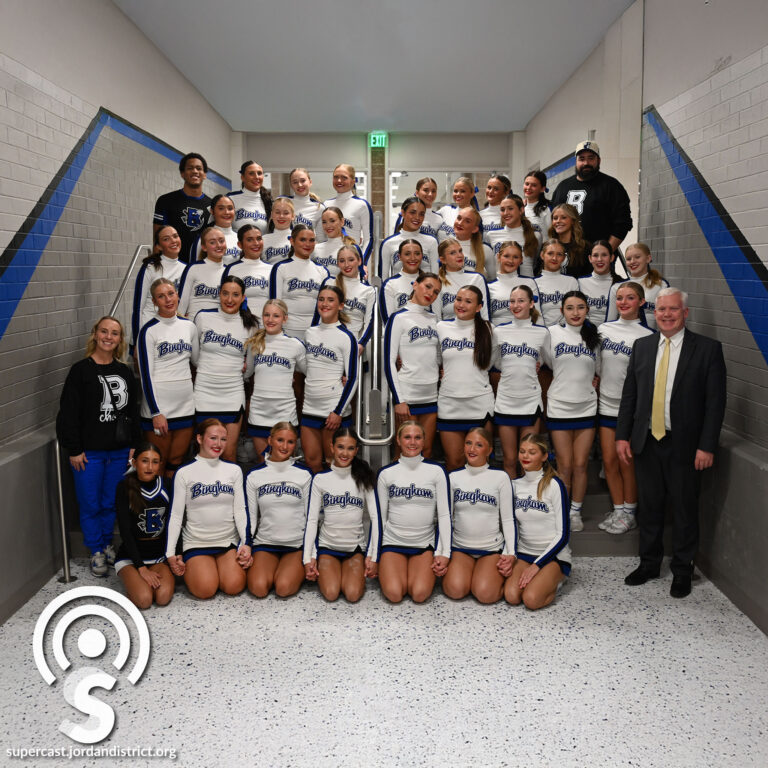It’s that time of year when Mother Nature brings rain, sleet, snow, and ice in combinations that can create some slick conditions around our schools and buildings.
On this episode of the Supercast, we talk to custodians who are constantly working throughout the day and sometimes into the night to prevent slips, trips, and falls for students, teachers, staff, and parents. Listen and find out how you can help.
Audio Transcription
Brandon Conti:
Our number one priority is the safety of all students, teachers, and staff.
Mark Nelson:
You know, you start watching that weather and you know when those days are coming and you don't sleep well that night. You usually just get up and get over to the school.
Nathan Morgan:
No slack time. You gotta watch the timing of the storm and the duration. The commute as well, so you need to be on top of all of it.
Anthony Godfrey:
Hello and welcome to the Supercast. I'm your host, Superintendent Anthony Godfrey. It's that time of year when rain, sleet, snow, and ice can create some slick combinations around our schools and buildings.
On this episode of the Supercast, we talk with custodians who are constantly working throughout the day and sometimes into the night to prevent slips, trips and falls from students, teachers, staff, and parents. Listen and find out how you can help.
[Music]We're here at West Jordan High School talking with two of our premier custodians about safety during the winter. Introduce yourselves and let's talk a little bit about how to stay safe.
Nathan Morgan:
Okay, I'm Nathan Morgan. I'm the head custodian over here at West Jordan High School.
Mark Nelson:
I'm Mark Nelson. I'm the head custodian at the district office.
Anthony Godfrey:
Now I know that nobody works harder than custodians when the snow falls and starts to stick to the ground. And there are no contract hours when that happens. Whenever it hits, it hits. I know, especially at the district office as I talk with Mark on a regular basis, you're there at all hours. Tell us a little bit about what it's like to clear that snow when it hits hard.
Mark Nelson:
You know, you start watching that weather and you know when those days are coming and you don't sleep well that night. You usually just get up and get over to the school. The district office, we're over there by Jordan Landing and airport number two. So we get the drift wind coming across that airport. So yeah, you know you're going to have a job that morning, but you know we enjoy it. We want to make sure our staff when they show up to work, they don't have to worry about how do I get to the door.
You know, after 33 years of doing this, I love to hear those compliments and the people say thank you for getting us in the building this morning. And you know, we love it.
Anthony Godfrey:
You do a great job. Now tell me about a high school. Activity starts at the high school at 5 a.m. They're lifting weights at 5 a.m. So there's no slack time.
Nathan Morgan:
No slack time. You got to watch the timing of the storm and the duration and since the commute is well. So you need to be on top of all those. So sometimes you get here at 3 a.m. just so you can have it cleared for the athletic kids at 5 a.m.
Anthony Godfrey:
Wow. Now the way my teenage son looks at it, he thinks, hey, the snow is still falling, I'm going to wait till all the snow has fallen. And that's a great stall tactic. But that's not how you work.
Nathan Morgan:
No.
Mark Nelson:
No, no, we show up so that our doors can be open. But if the snow just keeps dropping, we're out there as long as it takes. A lot of times we will clear a path if it's a super bad day. We ask everybody, to please use our path. Please don't walk through the foot of snow. Use the path we've given you. We will get to the rest of it. We care about the space and getting it cleared from edge to edge. That's kind of something in custodial, edge to edge is where we want it. But please give us that space. So use that space and be safe.
Nathan Morgan:
Agreed.
Anthony Godfrey:
Do high school kids ever cut the corner of the sidewalk and go through the snow?
Nathan Morgan:
Yes. Sometimes they go and they park over the curb and it just gives you barely enough room for the plow to get through. Sometimes if I see them sitting in their truck, they're waiting for the building to open because the doors unlock at 5.30 and they're there at 5. “I'll just say, hey, can you back up just a bit so I can get this clear?” They're always very respectful.
Anthony Godfrey:
I didn't think about that. You are clearing snow around student drivers. That's a whole other factor. So we hire an outside company to clear the parking lots. But our custodians are responsible for the sidewalks. And you, Mark, talked about people taking the route that has been cleared, giving you time to get edge to edge and do the rest of the sidewalks.
Mark Nelson:
Yes.
Anthony Godfrey:
What's the advice for those who are arriving at work on a snowy day to help keep them safe and give you the space to complete the work?
Mark Nelson:
Yeah. Be it our secretaries or the students. They're wearing their outfit today. They don't care that it's snowed. Please carry the nice shoes that go with your outfit in your bag. Wear something that's appropriate for the sidewalks and for getting yourself into the building. We've had a couple falls over my career that have been pretty bad. And it's high heels usually. And it's, “Hey, put the nice shoes in the bag. Bring them into the building. Then change.”
Anthony Godfrey:
So wear footwear that matches the weather.
Mark Nelson:
Yes.
Nathan Morgan:
Let us know if there's any ice out there that we missed. If you see something, report it right away so we can get it fixed. We'll get on the mule. We have all our mules on standby on snow mornings. They're ready to go. All gassed up. All salted up. Even when I finish around the building, I'll go fill it up just for that emergency call for a--
Anthony Godfrey:
Oh, so you're ready to go out of the spot?
Nathan Morgan:
We're ready to go, yes.
Anthony Godfrey:
Yeah. And I made the mistake years ago in the high school parking lot of walking up. And I saw a dark spot by my car. I'm like, “I'm sure it's just wet.” And it was ice. Watch for the dark spots. Don't assume that they're wet. I took a pretty good spill. And yes, we did pull it up on the security camera. And yes, it did look hilarious. How about taking a different route? Do you find that people take the sidewalk they're used to, even if there's one right next to it that's been cleared? They'll walk their normal path, right through the snow?
Mark Nelson:
We get that, yes. We get that. And our goal is to get to every sidewalk so you can have your normal day. But please use those paths we've cleared already. And know that we're salting those, so that's the safest path into the building. And we're putting down-- I mean, in your building, I don't know how many pallets you go through of salt, but I go through two pallets of ice melt a season.
Anthony Godfrey:
Two pallets?
Mark Nelson:
Yeah. And that's about 2,500 pounds per pallet of ice melt. So yeah.
Nathan Morgan:
About two years ago, we went through about eight pallets. It was quite a good time.
Anthony Godfrey:
Yeah, now let's talk about two years ago.
Mark Nelson:
22, 23.
Anthony Godfrey:
Two years ago with our two back-to-back snow days.
Nathan Morgan:
Yes.
Anthony Godfrey:
That was remarkable. And I think it was fairly unique to Jordan because, like you described, Mark, we have the wind, we have the lake effect, and we could not clear our campuses fast enough to bring people back in. I'm still a hero in my neighborhood because we had two snow days in a row. And actually, the neighborhood kids came and cleared my driveway as a thank you for the snow day.
Mark Nelson:
That's cool. That's awesome.
Anthony Godfrey:
But anyway, tell me about what it was like working through that two-day blizzard.
Nathan Morgan:
The first day was kind of overwhelming. I remember being out on the front sidewalk about seven, eight o'clock at night. And then I got the text from the custodial department that says, "Go home. We're closing school tomorrow. Go home. Get warmed up. Come back tomorrow morning, clear the snow." And that was kind of a relief because it was the drifts from the sidewalk, from the road to the sidewalk, the plow can't even get through. It was stuck.
Mark Nelson:
It was crazy.
Nathan Morgan:
It was crazy.
Mark Nelson:
Yeah, we had 10, 12-foot piles of snow from doing that. We had to bring in grounds crew to remove those piles at a lot of the facilities because it was so bad. And that's another shout-out to our grounds crew. They help us so much. If we have an area that our mules won't do or this or that, they will get over and help us when they can. And they're an integral part of that us too. And then also our mechanics. All of our equipment needs maintenance. So our mechanics and maintenance, they are awesome when it comes to helping us keep that equipment running. I'm currently using 16-year-old equipment, but it still keeps running and taxpayers are getting their greatest bang for the buck on this equipment because we do keep it running until it doesn't run.
Nathan Morgan:
100%, they are amazing. We have 20-year-old mules out there and they break and they're back up and going the next day without a beat.
Anthony Godfrey:
We do really have hundreds of great employees who dive in, do the work. And like you said, at all hours, 3 in the morning. And I know that on some of our snow days in the past, it's been a delivery day for Cisco. So then we have our nutrition services managers here in the snow, even though everyone else is home. Custodians are here, nutrition services managers are here to receive that food delivery. So there's a lot that goes on even when it feels like things are shut down. I can't thank you guys enough for the work that you do. You do keep us safe and warm and ready to learn. And that is no small feat and it's a 24/7 job, I know.
Nathan Morgan:
Oh, yeah, definitely.
Mark Nelson:
We enjoy it.
Nathan Morgan:
And I love it. I love this job. Yeah.
Mark Nelson:
Yeah. And the poor people in the portables is another thing. We worry about them.
Anthony Godfrey:
Oh, yeah. The whole portables is a whole separate thing.
Mark Nelson:
When we were in elementaries, all those portables have to be cleared too.
Anthony Godfrey:
Those metal ramps and metal staircases that are not very winter-friendly.
Mark Nelson:
Yeah. And pre-send your kids to school with appropriate gloves and things. They love to go outside even when it's...
Anthony Godfrey:
Yeah. That's true. That's true. They need to dress warm.
Mark Nelson:
Uh-huh.
Anthony Godfrey:
Yeah. Well, you guys do a tremendous job. These are great tips on staying safe in the winter. Take the cleared path, wear good footwear, and be ready to walk on the cleared sidewalks until everything is cleared edge to edge.
Mark Nelson:
Yes.
Anthony Godfrey:
But thank you very much. Thanks for taking the time today. And hopefully, we can continue a year like we've had. Lots of snow in the mountains, over 100% snowpack up there, and nice dry roads and sidewalks.
Nathan Morgan:
Oh, yes. Counting on it.
Mark Nelson:
We're ready. We're ready for it though.
Nathan Morgan:
We need it.
Anthony Godfrey:
Okay. All right.
Stay with us. When we come back we'll hear from more employees who are working hard to avoid falls and other accidents in winter weather and throughout the year.
[Music]Never miss an episode of The Supercast by liking and subscribing on your favorite podcasting platform. Find transcripts for this episode and others at supercast.jordandistrict.org.
[Music]Break:
Are you looking for a job right now? Looking to work in a fun and supportive environment with great pay and a rewarding career? Jordan School District is hiring. We're currently filling full and part-time positions. You can work and make a difference in young lives and education as a classroom assistant or a substitute teacher. Apply to work in one of our school cafeterias where our lunch staff serves up big smiles with great food every day. We're also looking to hire custodians and bus drivers. In Jordan School District we like to say people come for the job and enjoy the adventure. Apply today at employment.jordandistrict.org
Anthony Godfrey:
We're here with Brandon and Bonnie talking about how we avoid accidents, spills, injuries, especially during the icy and snowy season. Thanks for coming. Introduce yourselves and tell us a little bit about the role you play in Jordan School District.
Bonnie Brennan:
Okay, my name is Bonnie Brennan. I'm the director of insurance services, which kind of encompasses a few little things. All of the workers comp, accidents, property casualty, as well as the employee benefits.
Brandon Conti:
My name is Brandon Conti. I'm the risk management coordinator. I deal with all the compliance for the buildings, all the safety-related compliance, and fire code issues I deal with.
Anthony Godfrey:
That encompasses a lot. I don't think people realize. We've got 75 buildings or so, 57,000 students, 9,000 employees, and all the parents and patrons and others who come to buildings. So there are lots of opportunities for, unfortunately, now and then an accident to happen or something to go wrong. We work hard to mitigate those. But let's talk about some of the things that those who are visiting our schools or working in our schools can do to minimize the possibility of injury.
Bonnie Brennan:
Well, I think the most important thing is to just be aware of your surroundings. Pay attention when you're walking in. Watch for that black ice. Make sure you're going into the entrance that's been plowed and salted.
Brandon Conti:
Yeah, I just think we always need to be aware of our surroundings. I mean, that's why I deal with all. We come through the buildings and check everything regularly. But especially this time of year with winter weather, our biggest concern is always slips, trips, and falls. And understanding what door to use, like you said and just being aware of all your surroundings. One of the big things we push is proper footwear. How many people are wearing such horrible shoes for winter weather? Just even high heels. Shoes with no tread at all. Some of our hugest concerns right there.
Anthony Godfrey:
I've been guilty of that. I have noticed. You slip a little bit. You look and I guess I have worn these dress shoes beyond their natural life.
Brandon Conti:
So one of our big concerns right now is when students are being dropped off, we want to have one path of entrance really clear. So we're really pushing that towards the custodians to have the main entrance of the school cleared first. So that everyone knows that's the entrance to the building.
Anthony Godfrey:
So when you pull up and it's been snowy, you may have to adapt.
Brandon Conti:
Exactly.
Anthony Godfrey:
You may not be able to take the same route that you normally take. Walking in or driving in. And that goes back to what you said earlier, building some time so that you can adapt and adjust and not be in a hurry. Tell us about some of the other things that are involved in helping avoid risk and keeping people safe in Jordan District.
Bonnie Brennan:
If you see something, say something. Our custodians can't be everywhere. So if you see something that's been spilled, hang around there until someone is able to get a sign up.
Anthony Godfrey:
About driving onto campus and our parking lots, which our parking lots are cleared by a third party.
Brandon Conti:
That's correct.
Anthony Godfrey:
Tell us about what people could do to avoid accidents in our parking lots.
Brandon Conti:
First and foremost would be to slow down. Everyone wants to drop their students off so fast that it just causes such a problem, especially if there is snow on the ground. So that's what I'd always say is just slow down and then just pay attention to all the surroundings around you.
Bonnie Brennan:
Yeah, because then you don't, if you're slowing down, you don't have to brake abruptly. And if the roads are icy, then you're going to slip.
Anthony Godfrey:
And it's easy for us to maybe talk about some of this and maybe people listening are saying, well, yeah, there's a yellow sign that there's a wet floor. I'll pay attention to that. Or if the roads are icy, of course, I'm going to drive more slowly. But that's not the experience in the moment when you're feeling the stress of getting to school on time when other things are going on. We can’t always count on that. So I think it's an important reminder. We all know we ought to do those things. It's remembering to do them in the moment that's tricky.
Bonnie Brennan:
Right. Be a little late. A little late for work or whatever, as long, you know, but just be safe. Get there safely.
Brandon Conti:
Some of the strange ones we see sometimes is like parents will be in such a hurry that they don't really clear off their car all the way. And then suddenly that's a big deal because then you can't see their turn signals, you can't see that they're braking, their lights aren't on, and then cars in front of you behind you don't even see you.
Anthony Godfrey:
I have never done that, Brandon. I've never done that.
Bronnie Brennan:
Common sense.
Brandon Conti:
Clear the snow off your car.
Anthony Godfrey:
It's a fair point.
Brandon Conti:
Their whole windshield is still covered in snow, except for the windshield wipers only. You can't see around you because you've got to be able to see all around you when you're looking.
Bonnie Brennan:
Especially when there's children around.
Brandon Conti:
Crosswalks.
Bonnie Brennan:
You don't know what they're doing.
Brandon Conti:
You don't see.
Anthony Godfrey:
Expect the unexpected. Expect the unexpected when you're driving around students.
Brandon Conti:
This year has not been too heavy on snowfall, but it's been so cold, so ice is such a concern.
Anthony Godfrey:
Yeah.
Brandon Conti:
Lots and lots of ice melts going around the district right now. So always be aware of the ice melt and the salt.
Anthony Godfrey:
People may underestimate how early our buildings are used. We have kids lifting weights at high schools at 5.30 in the morning and food deliveries and food being prepared even earlier. Bus drivers arriving before five o'clock. So it's very complicated. It's a lot of work, and I appreciate everything that you both do to help keep us safe out there.
Bonnie Brennan:
Thank you, and we appreciate everyone out there in all of buildings.
Brandon Conti:
Yeah, this has been great. Everyone's very in compliance, and I appreciate everyone's hard work.
Anthony Godfrey:
Thank you.
Thanks for joining us on another episode of the Supercast. Remember, education is the most important thing you will do today. We'll see you out there.
(upbeat music)

